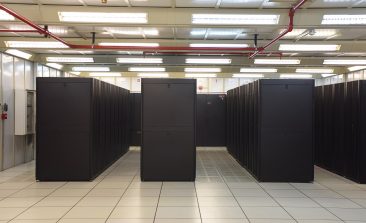9 Results for: data centres
Deep Green Data Centres Heat Swimming Pools in the “Perfect Symbiotic Relationship”
Deep Green uses waste heat from its data centres to heat swimming pools, reducing their carbon emissions and keeping them afloat as energy costs soar.
Utilising Waste Heat From Data Centres: How Our Browser Activity Could Soon Be Used to Heat Our Buildings
Data centres consume huge amounts of energy – and generate plenty of heat in the process. In Sweden, thousands of households are already heated with server heat. Could this be a potential source of clean energy?
The Key to Sustainable Digitalisation? Data Centres Powered With Green Energy
A new study takes a look at the power consumption and CO2 emissions caused by the very backbone of the internet - data centres - and offers ideas on what we can do to ensure that this cornerstone of our digital lives is greener and kinder to the planet.
AI Helps Shrink the Carbon Footprint of Energy-Hungry Data Centres
More and more data centres are being built around the world - and as they grow in size and number, so does their sizable carbon footprint. Artificial intelligence could provide a solution.
Tidying Up With the “Digital Data Clean-Up”: The Campaign Shows How Digital Working Can Become More Sustainable
The digital data clean-up helps employees to clear out digital rubbish. The campaign takes place 16-27 September: RESET is taking part!
Portable Sensor AirBeam Measures Air Quality—and Shares Its Open-Source Data
Are we really breathing clean air when we sit in our garden or local park? The portable measuring device AirBeam can answer this question—and thanks to its open-source data—also protects other people from the impact of air pollution.
Cheap Sensors Provide Missing Air Quality Data in African Cities
Calibrated low-cost sensors in Kinshasa and Brazzaville provide new information on pollution and help scientists model a way to improve access to air quality data.
Qarnot’s Smart Computer-Radiators Turn Data Flows Into Sustainable Heating
While data centres produce huge amounts of heat when at work, and have to be cooled with air conditioning, we also spend a lot of energy heating our homes. A French company has come up with a solution that kills two birds with one stone - a way of recycling that computing power and using it to heat buildings.
Village Data Analytics: Satellites Help Bring Solar Power to Rural Communities
Many rural off-grid communities would benefit hugely from being hooked up to a solar power system. But which areas are most suitable for solar power installation? And which are most in need? A new earth observation software is using artificial intelligence and satellite imagery to bring power to people more accurately, efficiently and faster than before.








